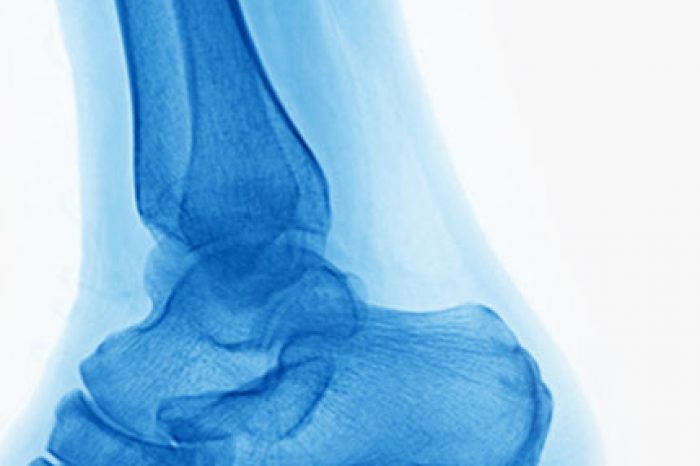Plantar fasciitis is a common cause of heel pain, often resulting from repetitive strain and inflammation of the plantar fascia. While conservative treatments such as rest, physical therapy, and orthotics are often effective, some individuals turn to corticosteroid injections for relief. These injections can offer short-term pain reduction, but they come with potential complications, including:
Plantar Fascia Rupture
- One of the most serious risks associated with corticosteroid injections is the potential for plantar fascia rupture. Overuse of steroids can weaken the fascia, leading to tearing. A rupture can cause increased pain, arch collapse, and long-term foot dysfunction, making recovery more difficult.
- The incidence of rupture is reported to be around 1.5% in some studies [Martin et al, 2014; Acevedo & Beskin, 1998].
Fat Pad Atrophy
- Corticosteroids can contribute to the thinning of the protective fat pad in the heel. Since this padding is essential for absorbing shock during walking and running, fat pad atrophy can lead to chronic heel pain and discomfort, making everyday activities more challenging.
- Subcutaneous fat pat atrophy is caused by the
catabolic effects of corticosteroids on adipose tissue.
- Fat pad atrophy can be permanent and difficult to
manage [Kamel et al, 2024; Brinks et al, 2010].
Injection-site pain
- Some patients experience a temporary worsening of pain, known as a steroid flare, shortly after the injection, and is a common and typically transient side effect.
- The pain is often due to the mechanical effect of the needle and the volume of the injected substance [Martin et al, 2014] or a local inflammatory
response to the corticosteroid [Kamel et al, 2024; Brinks et al, 2010].
Infection
- As with any injection, there is a small risk of infection at the injection site. Signs of infection include redness, swelling, warmth, and pain.
- In severe cases, an untreated infection can spread and lead to serious complications, requiring medical intervention. Prompt medical attention is required to manage infections, which may necessitate antibiotic therapy [Kamel et al, 2024; Brinks et al, 2010].
Nerve Damage
- Damage to nearby nerves can occur during the injection process, leading to symptoms of numbness, tingling, or even long-term sensory deficits in the foot. This can impact mobility and the ability to feel sensations in the affected area [Kamel et al, 2024; Brinks et al, 2010].
Muscle damage
- Corticosteroids can cause local muscle atrophy or damage, leading to
weakness and functional impairment. This is due to the catabolic effects
of the medication on muscle tissue [Kamel et al, 2024; Brinks et al, 2010].
Skin Depigmentation and Tissue Damage
- Corticosteroids can sometimes cause localized skin depigmentation, or hypopigmentation, creating a lighter area around the injection site.
- This is due to the corticosteroid's effect on melanocytes, leading to a lighter skin color in the affected area. These changes are often permanent [Kamel et al, 2024; Brinks et al, 2010].
- Additionally, repeated injections can lead to tissue damage or the formation of small depressions in the skin.
Systemic effects
- Systemic absorption of corticosteroids can lead to
adrenal suppression, hyperglycemia, hypertension, and osteoporosis.
These effects are more likely with repeated injections or higher doses, especially in patients with predisposing
conditions [Stout et al, 2019].
Limited Long-Term Effectiveness
- While corticosteroid injections can provide temporary pain relief, they do not address the root causes of plantar fasciitis. Without proper rehabilitation and lifestyle changes, symptoms may return, sometimes more severely.
Final Thoughts
Corticosteroid injections can be a useful tool for managing plantar fasciitis pain, but they should not be the first or only line of treatment. Patients should weigh the benefits against the risks and consider alternative treatments such as physical therapy, orthotics, stretching exercises, and shockwave therapy. Consulting a healthcare professional to explore all available options can help ensure a safe and effective approach to heel pain relief.
References
- Acevedo JI,
Beskin JL. Complications of plantar fascia rupture associated with
corticosteroid injection. Foot Ankle Int. 1998 Feb;19(2):91-7.
- Brinks
A, Koes BW, Volkers AC, Verhaar JA, Bierma-Zeinstra SM. Adverse effects
of extra-articular corticosteroid injections: a systematic review. BMC
Musculoskelet Disord. 2010 Sep 13;11:206.
- Kamel SI, Rosas
HG, Gorbachova T. Local and Systemic Side Effects of Corticosteroid
Injections for Musculoskeletal Indications. AJR Am J Roentgenol. 2024
Mar;222(3):e2330458.
- Martin RL, Davenport TE, Reischl SF, McPoil TG, Matheson JW, Wukich DK, McDonough CM; American Physical Therapy
Association. Heel pain-plantar fasciitis: revision 2014. J Orthop SportsPhys Ther. 2014 Nov;44(11):A1-33.
- Stout
A, Friedly J, Standaert CJ. Systemic Absorption and Side Effects of
Locally Injected Glucocorticoids. PM R. 2019 Apr;11(4):409-419.
